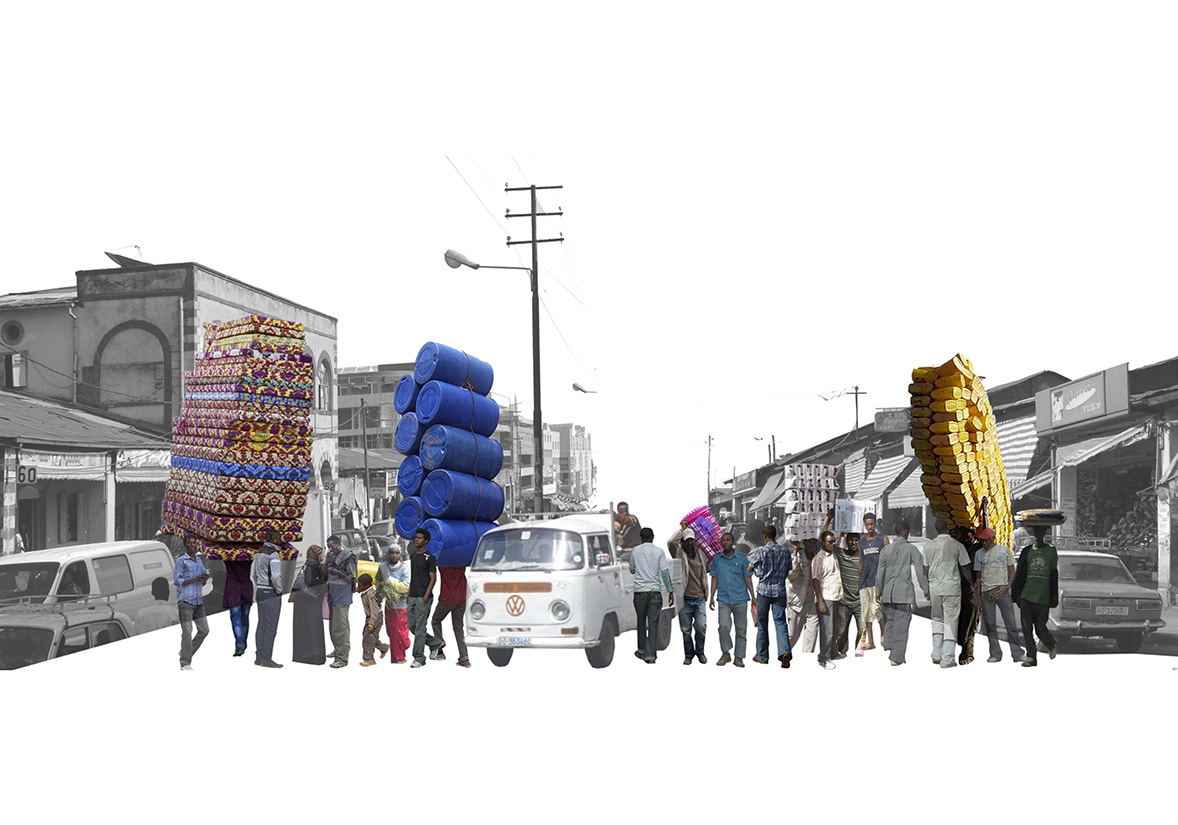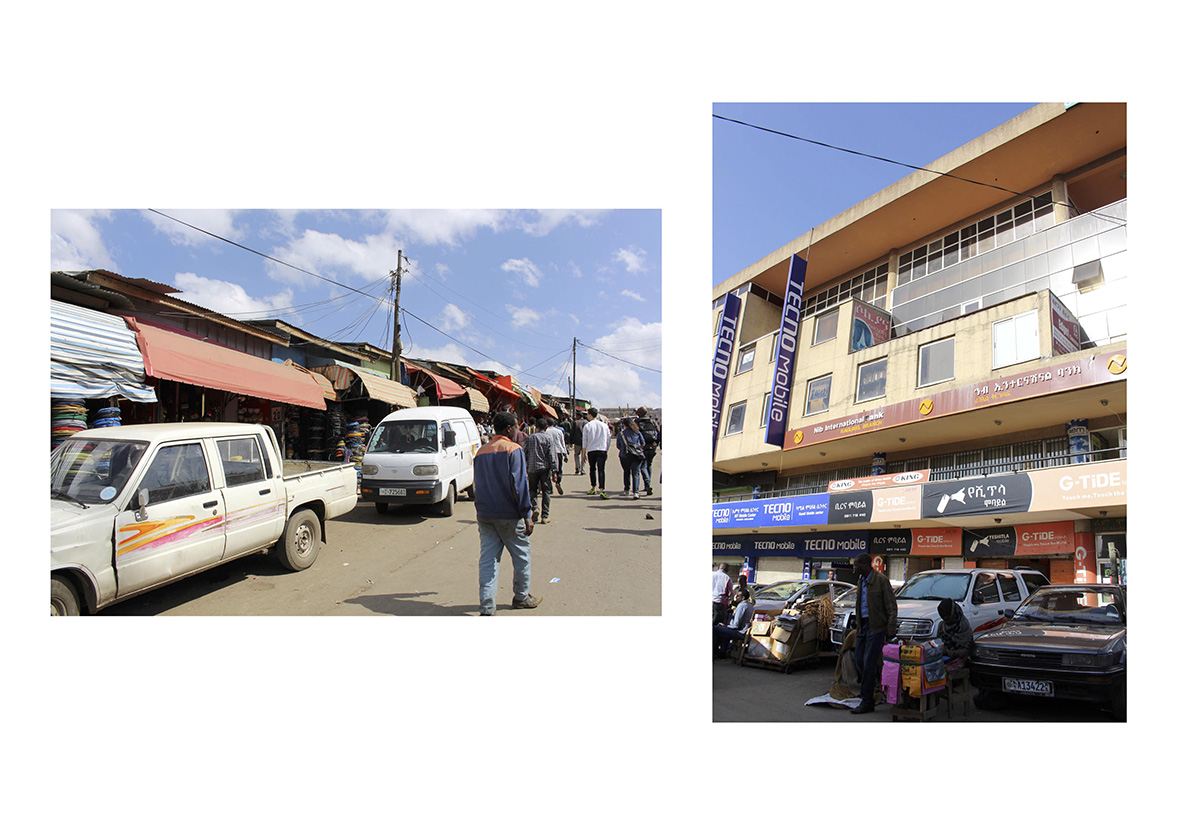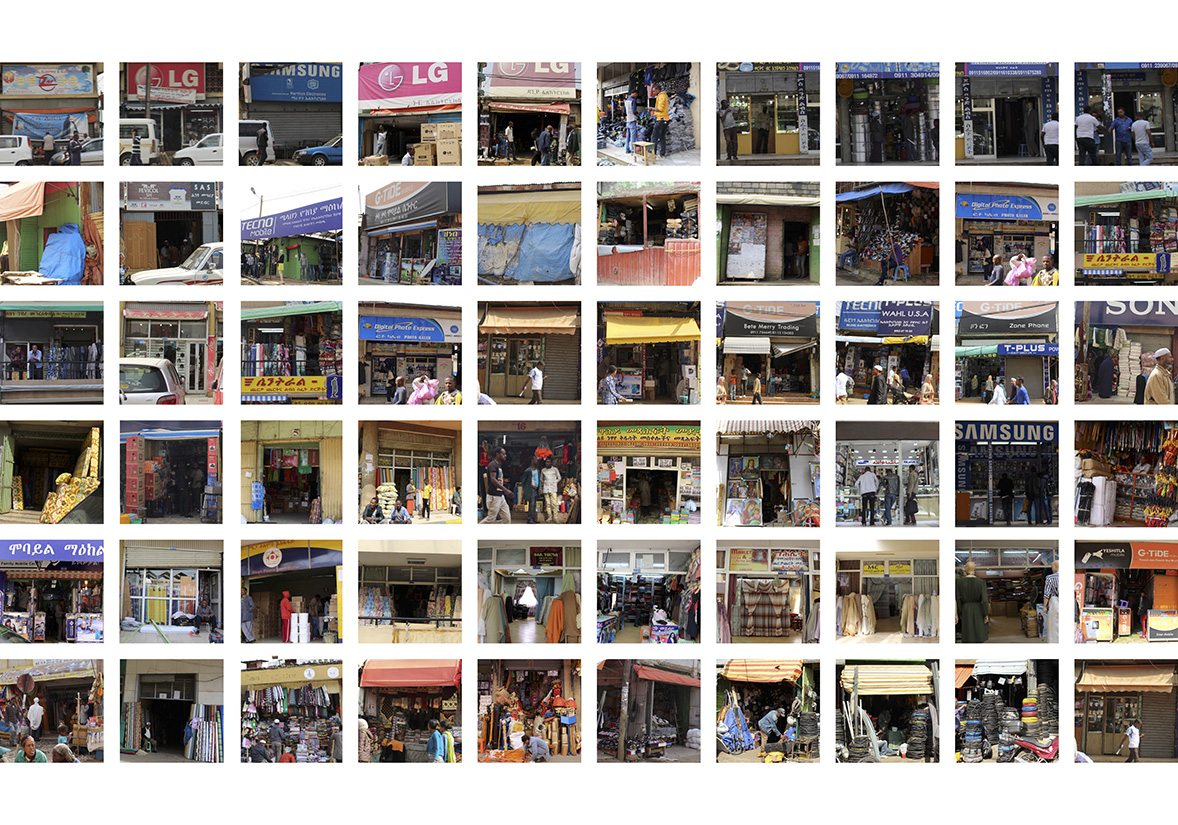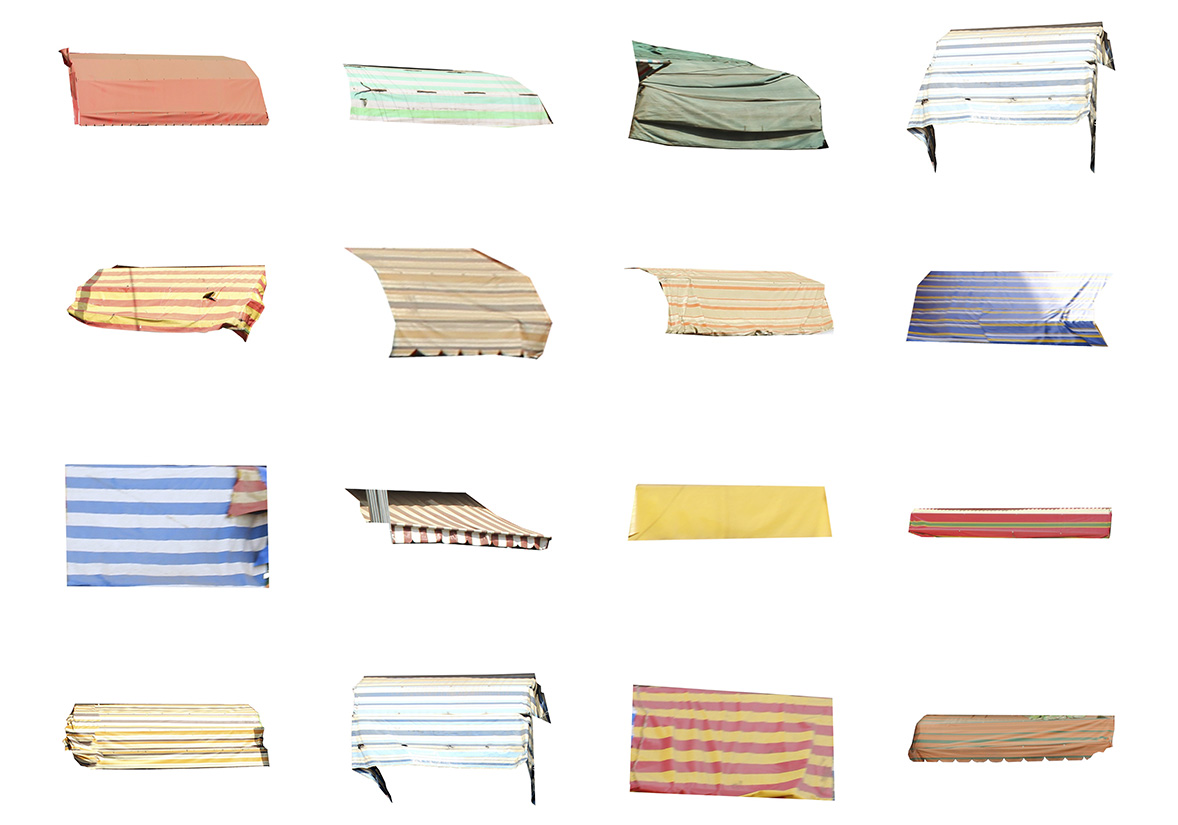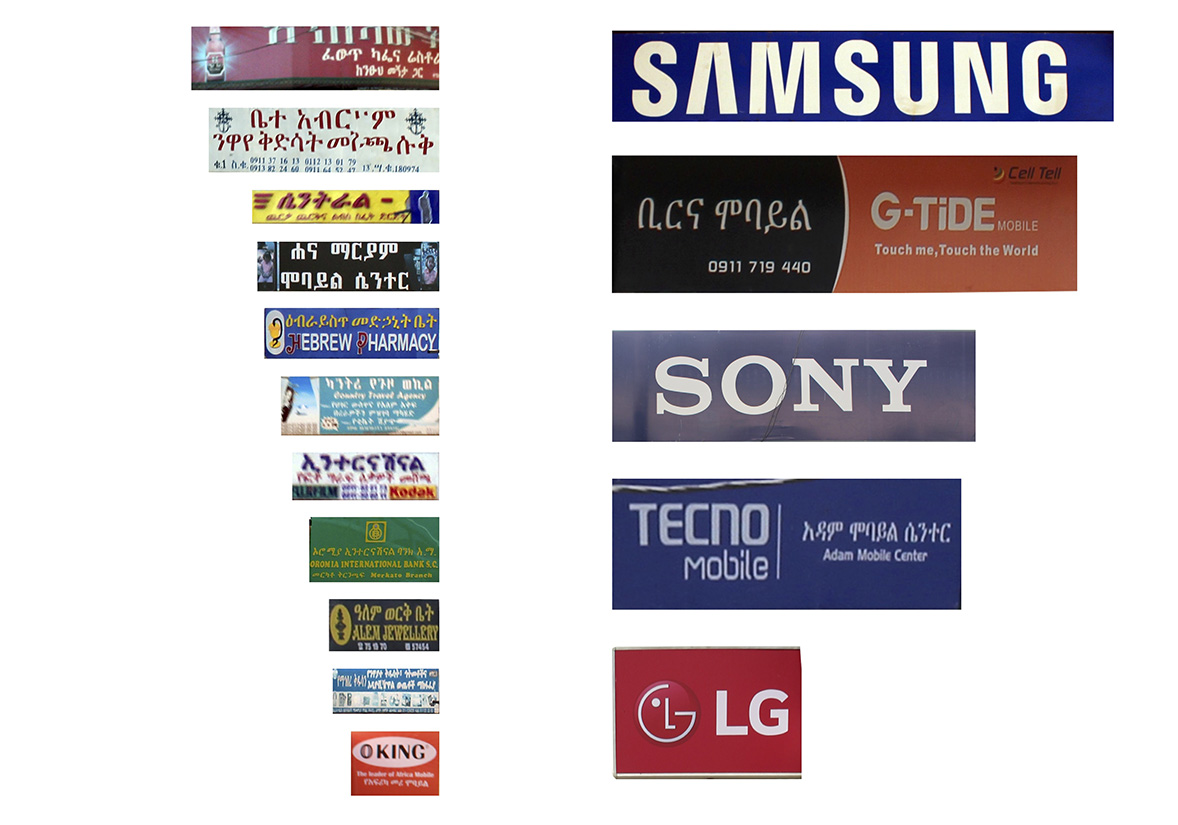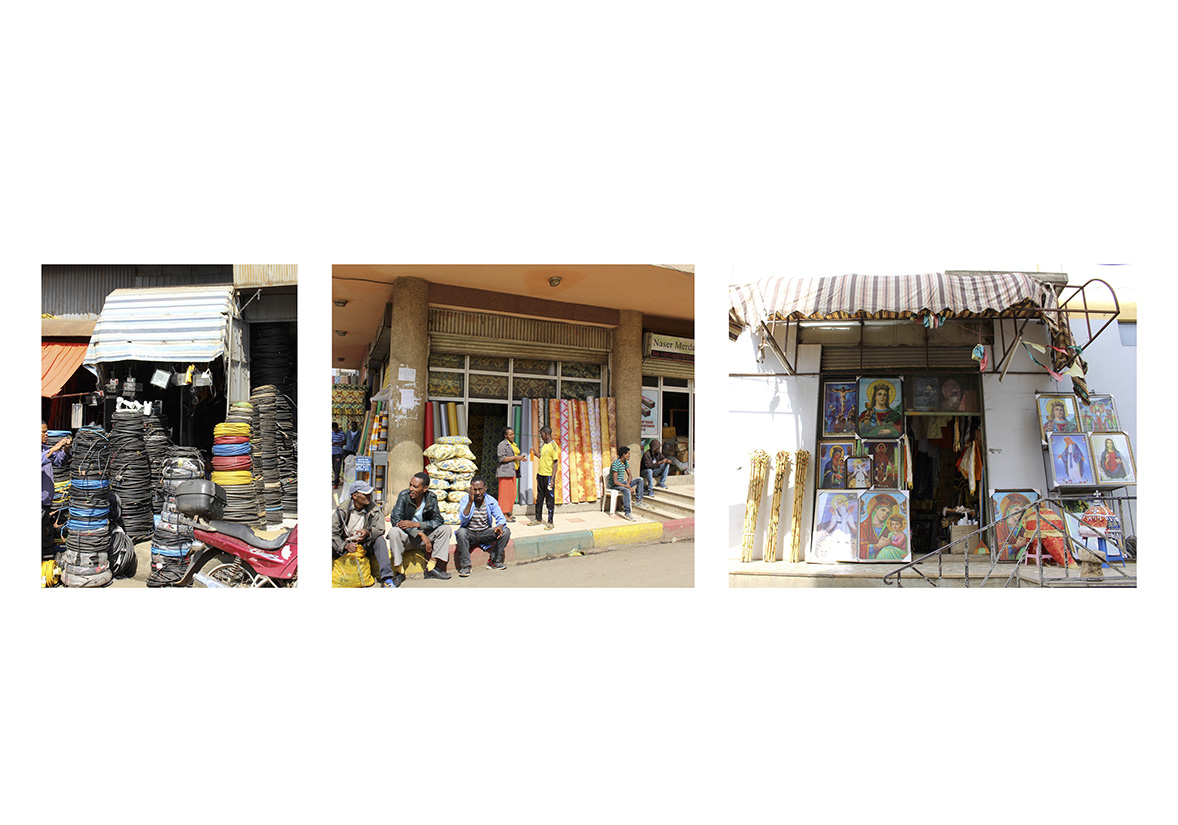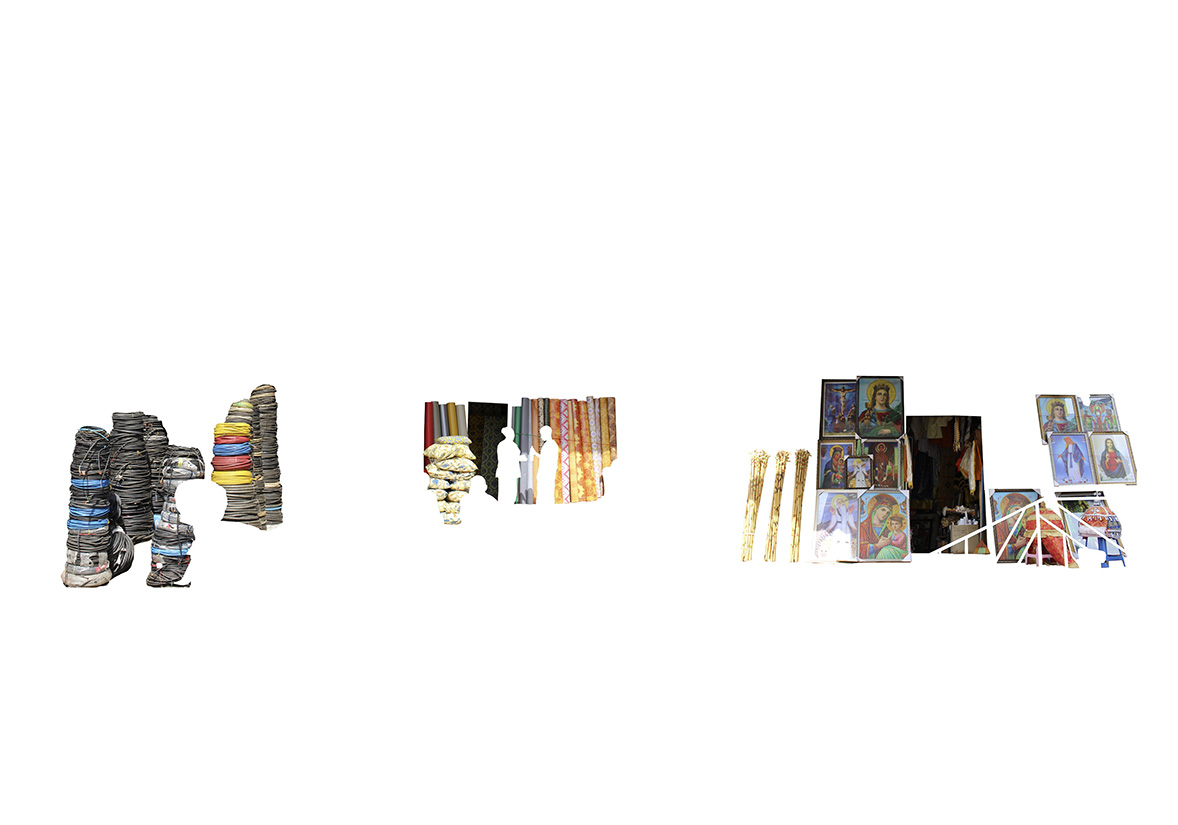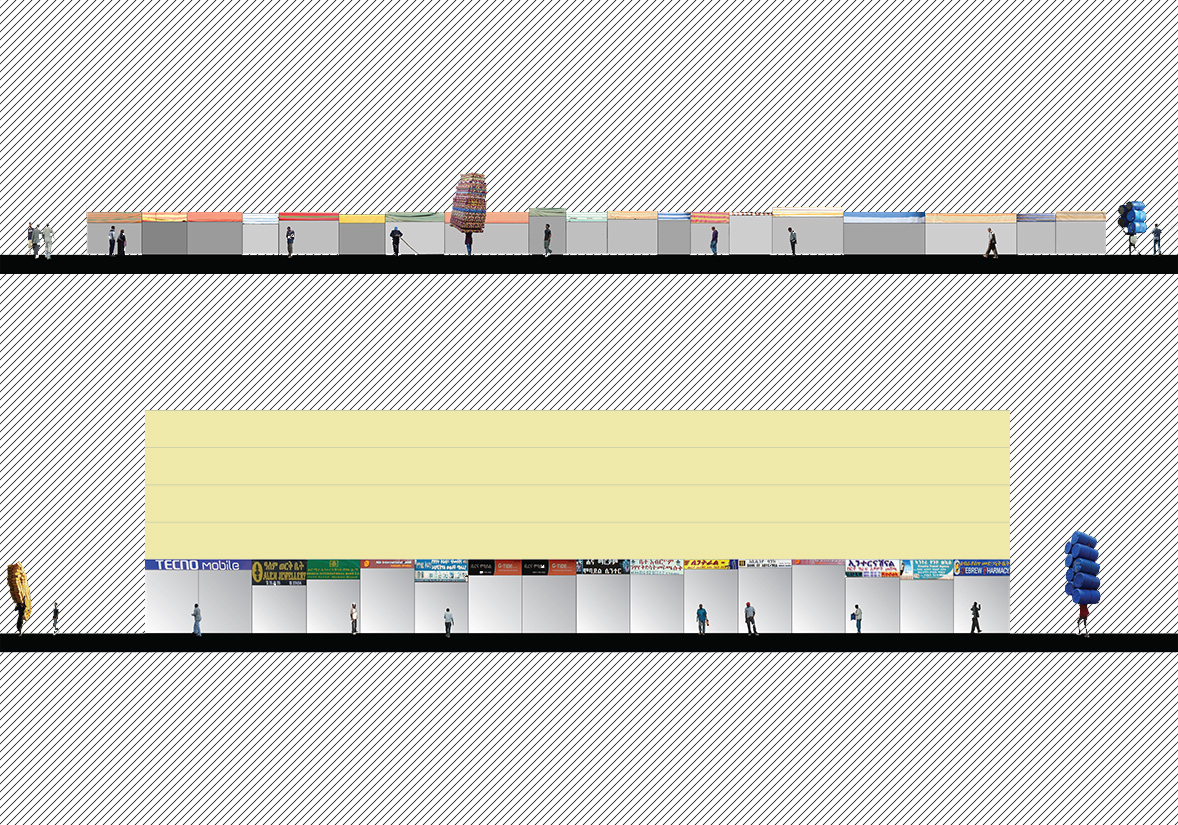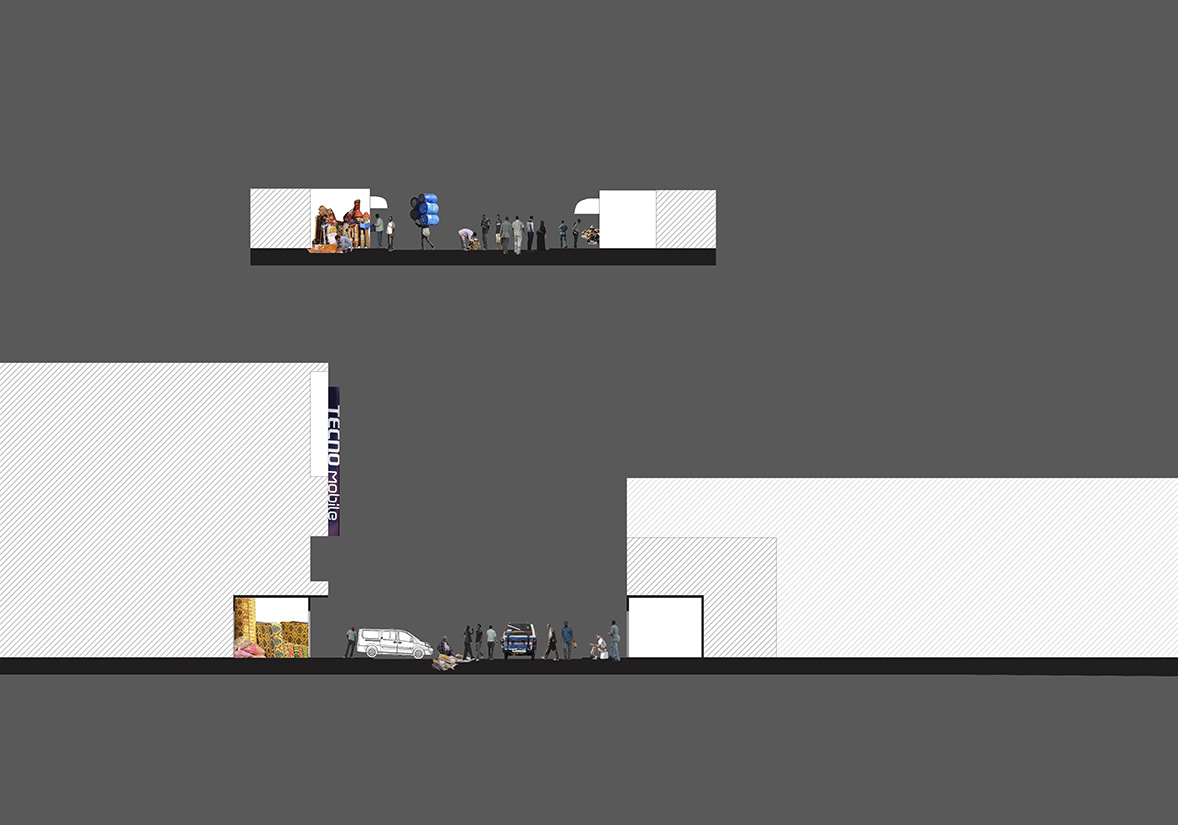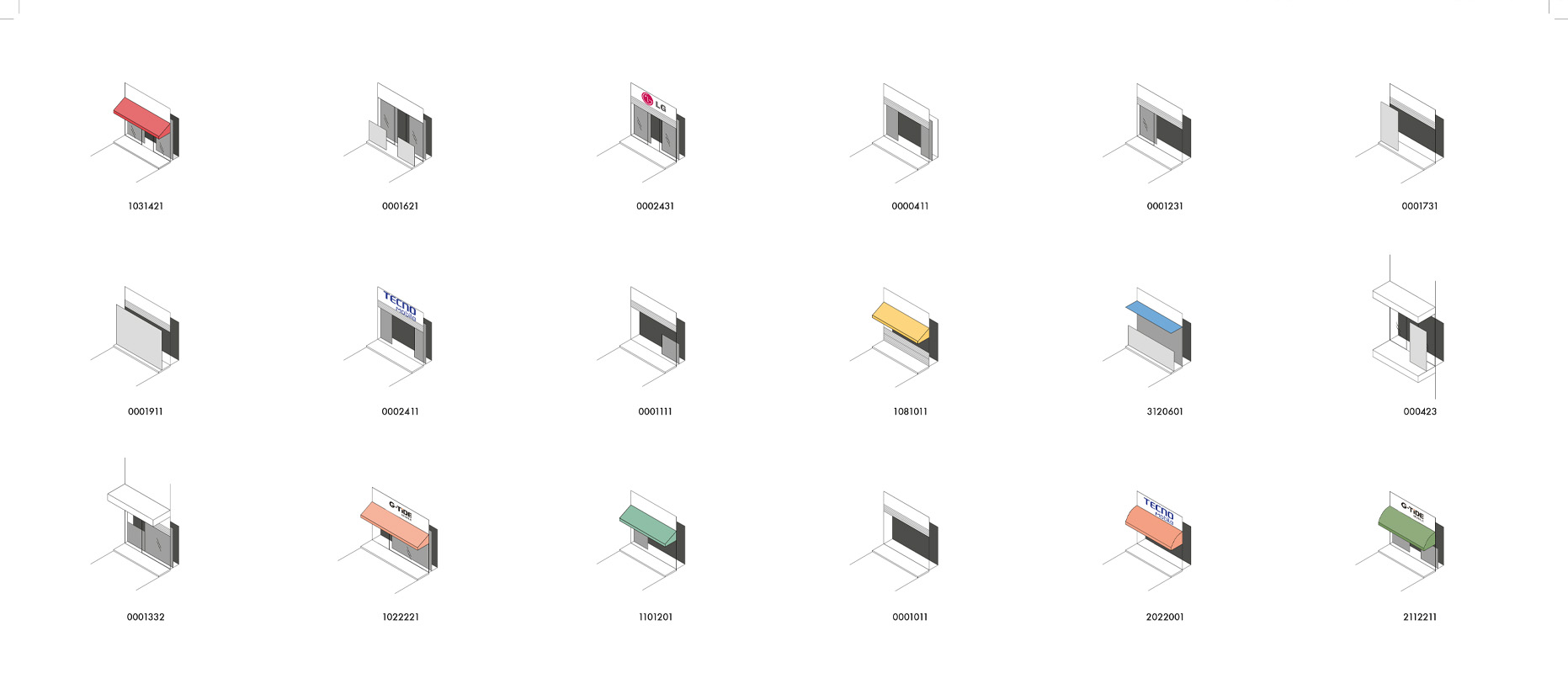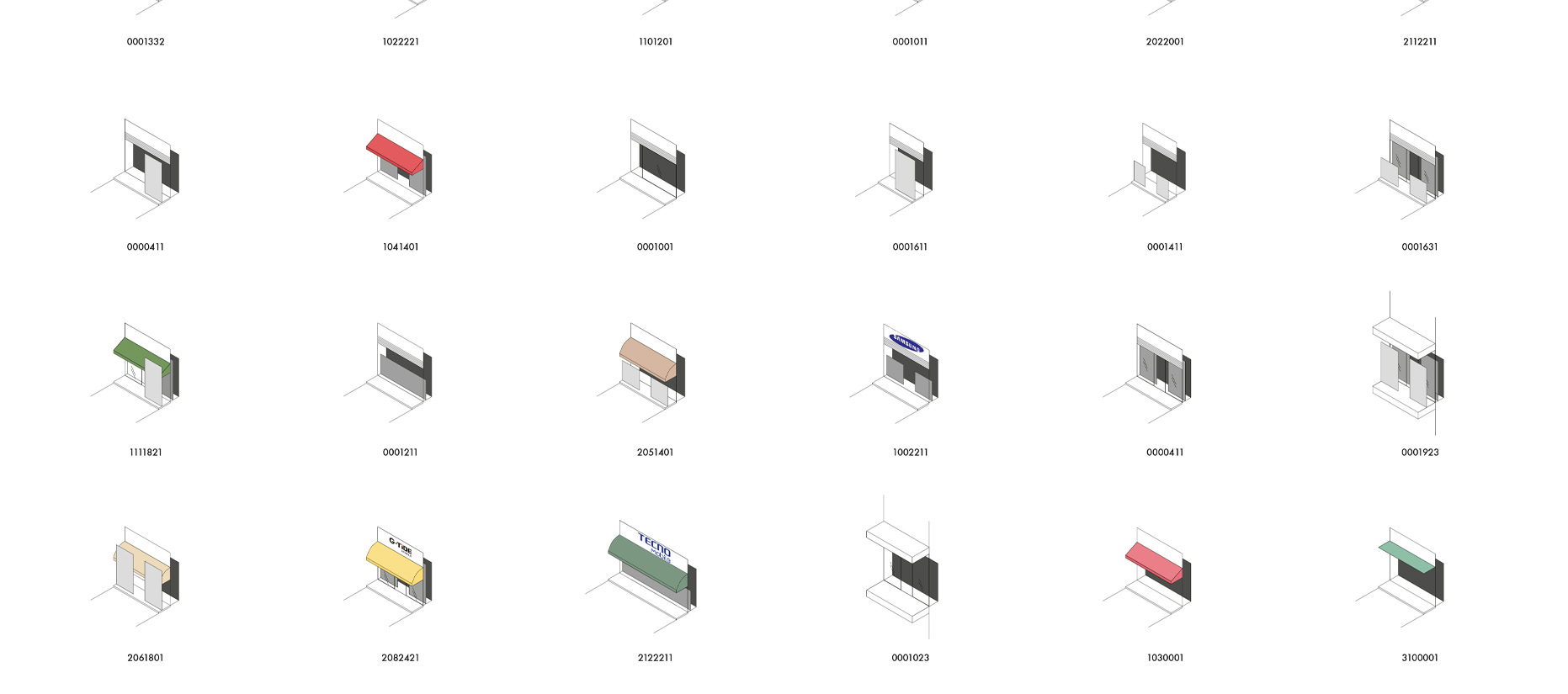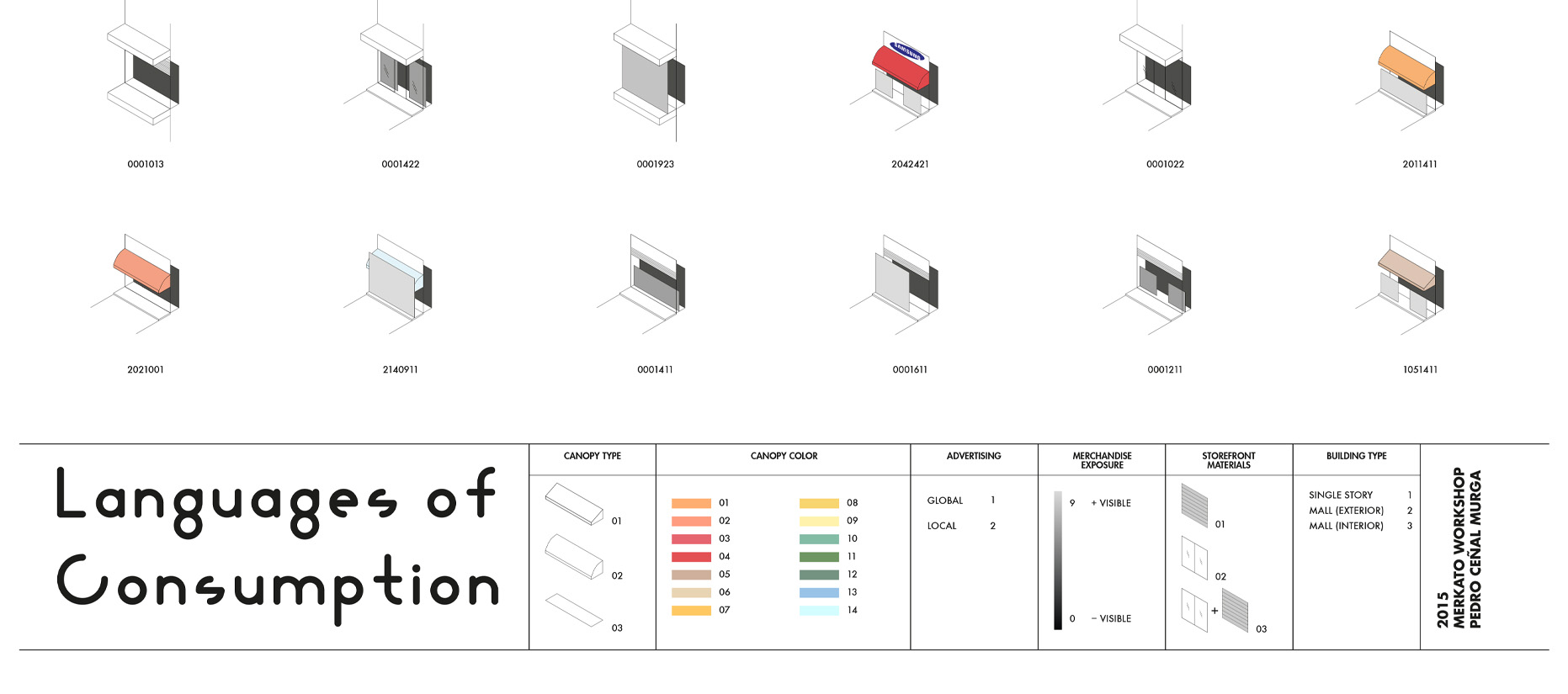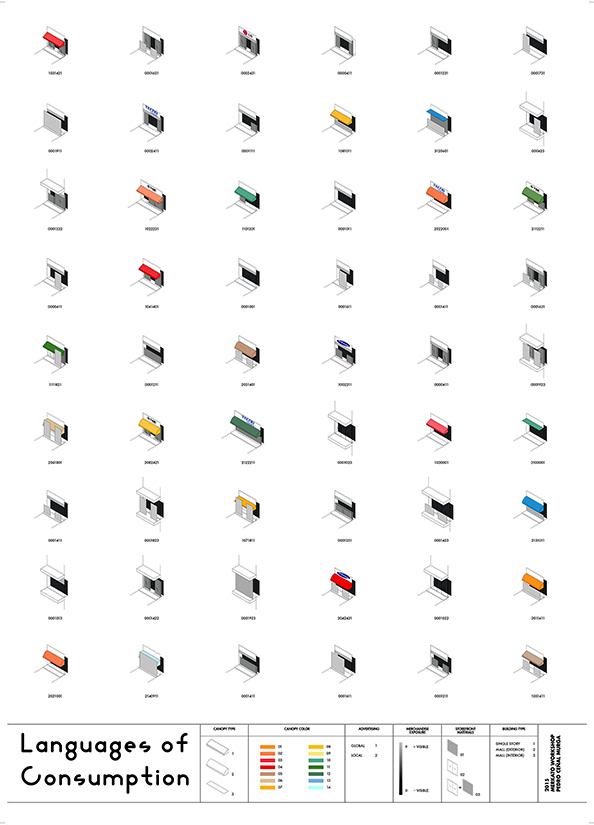Languages of Consumption is the culmination of a research grant spearheaded by Columbia University’s Graduate School of Architecture, Planning, and Preservation (GSAPP). This initiative delved into the intricate analysis, documentation, and portrayal of one of Africa’s most expansive open-air markets: the Addis Ababa Merkato in Ethiopia.
An initial exploration of such establishments revealed that their vibrant energy largely emanates from the strategic arrangement of merchandise and the clever use of architectural elements intended to captivate pedestrians and immerse them in consumer experiences. By skillfully showcasing products and ensuring their accessibility within the urban environment, the businesses operating in the Merkato district have effectively transformed kilometers of streets into bustling commercial hubs dedicated solely to trade.
1/
However, the rapid urbanization witnessed over the past decade has brought about significant changes in Merkato’s architectural landscape. The advent of shopping center typologies, embraced by select merchants, has led to the construction of towering buildings, some spanning over five stories, gradually encroaching upon the traditional urban fabric characterized by humble stalls. Yet, upon closer examination, a discernible recurrence of similar design elements across storefronts emerges, indicating a shared vernacular between the traditional Merkato architecture and the newer structures.
Languages of Consumption aims to decipher these prevalent architectural codes. To achieve this, over one hundred storefronts were meticulously documented and dissected into an inventory of prevailing architectural prototypes.
1/
The primary focus was on the canopies and their varied shapes and colors, followed by an examination of billboards, which are sometimes integrated into the canopies or serve as standalone features. These billboards often showcase advertisements for both international and local products, with the former being frequently replicated, while the latter remain unique and non-repetitive.
Another critical aspect considered was the manner in which merchandise is displayed. From a pedestrian’s viewpoint, merchandise appears as distinct layers or surfaces with varying depths. Consequently, I categorized the display of merchandise based on its visibility, resulting in an inventory comprising six essential categories aimed at captivating consumers’ attention.
1/
A specially crafted poster, showcased at an exhibition held at the ZOMA Contemporary Art Center, located a few kilometers from Merkato, illustrates some of these archetypes in the form of a conventional sales catalogue, serving as a meta-discourse on consumerism. These illustrations underscore the enduring language within Merkato’s ever-evolving landscape, characterized by varying intensities of constant elements.
1/
Languages of Consumption
* Workshop – Exhjibition
¬ Addis Abeba
∞ June 2015

